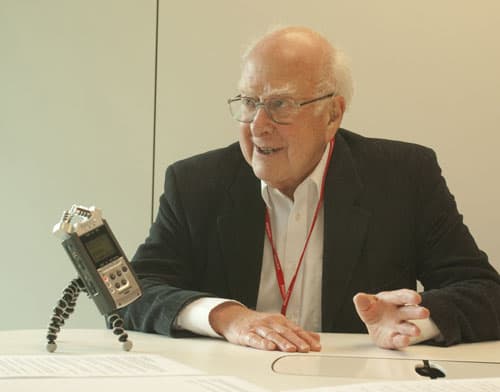Researchers in the US have developed a prototype retinal implant that they hope will help to restore sight to patients blinded by the loss of light-detection cells in their eyes. Although it is not the first such device – other scientists have already conducted human trials on retinal implants – this latest device is the one of the first to work without an external power source. The researchers believe this should make it easier to miniaturize the circuitry involved, allowing higher-resolution vision.
One of the most intriguing areas of research into medical prosthetics – and, in some cases, treatment – is the development of retinal implants. These aim to restore some degree of sight to patients blinded by conditions such as age-related macular degeneration or retinitis pigmentosa. In these conditions, the photoreceptors in the eye decay while the neurons that carry the signal to the brain remain intact. It is possible, therefore, to restore some degree of sight by implanting a light sensor on the retina and using the electric current to stimulate the neurons.
Wireless solution needed
Early designs for retinal implants usually required an external power source to be wired into every pixel of the implant. This limits the minimum pixel size and thus the resolution that can be obtained. So Keith Mathieson, James Loudin, Daniel Palanker and colleagues at Stanford University have developed an alternative that is powered by the incoming light itself. This has obvious appeal because, as Richard Taylor, who works on retinal implants but was not involved in the new research explains, “no-one wants a wire in their eyeball!”. The concept has proved a great challenge, however, because there simply isn’t enough energy in visible light to produce the electricity needed to stimulate neurons.
The Stanford team’s solution involves the patient wearing special goggles that receive incoming visible light and process the image before transmitting information about it into the eye as a series of infrared laser pulses. Powering the goggles, which joint lead author James Loudin describes as “the exact opposite of night-vision goggles, which convert infrared radiation into visible light”, is much simpler than powering retinal implants.
The amplified infrared pulses pass through the eye to a sub-retinal implant comprising an array of infrared photodiodes. These photodiodes convert the infrared radiation into electrical signals, which stimulate the surviving neurons. Although the neurons will only occasionally receive a brief pulse of electricity from the photodiodes, Loudin does not anticipate that this will cause a problem. “The human eye only has a bandwidth of a few tens of hertz anyhow,” he says, “which explains why movies look continuous even though they are actually delivered at 25 frames per second.”
Test-tube study
The team’s current paper describes a test-tube study using the set-up to stimulate electrical responses from both healthy and degenerate rat retinas using infrared light. The researchers are now studying their implant in live rats. Loudin is pleased with the results, which are currently awaiting publication. Ultimately, the team would like to test the technology in humans, which remains the ultimate goal, but on this point Loudin is cautious. “At present this remains an academic study with no commercial entity associated with it,” he says, “although we’re open to receiving such offers.”
Psychologist, physicist and artist Richard Taylor of the University of Oregon in Eugene believes that the research makes a valuable contribution to the growing field of work in treating this type of blindness. “From my view,” he says, “the best long-term solution is to develop a chip that replicates the function of the diseased photoreceptors – the approach taken here.” He explains that commercial companies on both sides of the Atlantic have made considerable headway with this approach, but they have been hamstrung by the need to power the implant.
“In the current work, the researchers make use of near-infrared physics to deliver a very appealing solution. Perhaps most crucially, they show that this design can work using radiation intensities substantially below the safety limits for the visual system,” he concludes. “This is a very impressive demonstration.”
The research is published in Nature Photonics.

